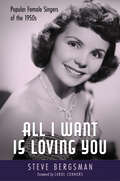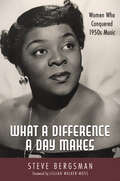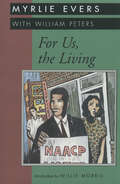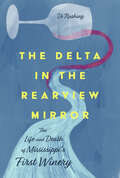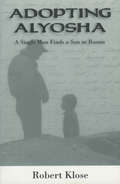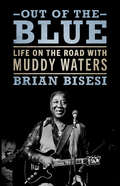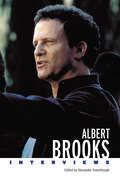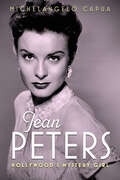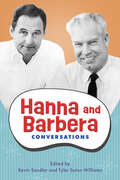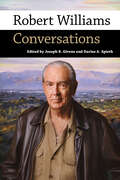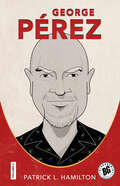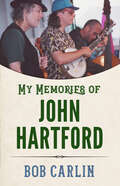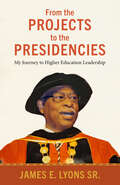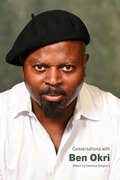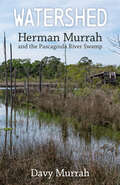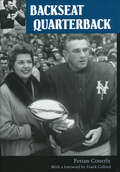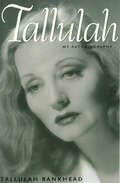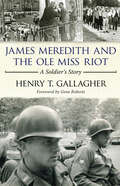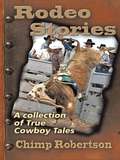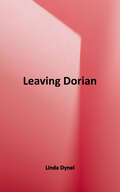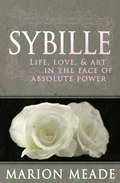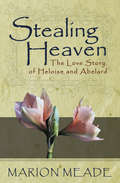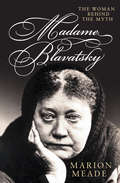- Table View
- List View
All I Want Is Loving You: Popular Female Singers of the 1950s (American Made Music Series)
by Steve BergsmanIn All I Want Is Loving You: Popular Female Singers of the 1950s, author Steve Bergsman focuses on the white, female artists of the 1950s, a time that predated the chart-topping girl groups of the early 1960s. These popular performers, many of whom graduated out of the big bands of the 1940s, impacted popular music in a huge way. As the last bastion of traditional pop and the last sirens of swing, they undeniably shined in the spotlight. Yet these singers’ fame dimmed relatively quickly with the advent of rock ’n’ roll. A fortunate few, like Doris Day, Patti Page, Peggy Lee, and Debbie Reynolds, experienced some of their biggest hits in the late 1950s, and Eydie Gormé broke out in the 1960s. The luckiest, including Dinah Shore and Rosemary Clooney, ventured to television with varying degrees of success. Others would become major attractions at nightclubs in Las Vegas or, like Teresa Brewer, shift into the jazz world.Though the moment did not last, these performers were best-selling singers, darlings of the disk jockeys, and the frenetic heartbeat of fan clubs during their heyday. In a companion volume, Bergsman has written the history of African American women singers of the same era. These Black musicians transitioned more easily as a new form of music, rock ’n’ roll, skyrocketed in popularity. In both books, Bergsman reintroduces readers to these talented singers, offering a thorough look at their work and turning up the volume on their legacy.
What a Difference a Day Makes: Women Who Conquered 1950s Music (American Made Music Series)
by Steve BergsmanIn What a Difference a Day Makes: Women Who Conquered 1950s Music, Steve Bergsman highlights the Black female artists of the 1950s, a time that predated the chart-topping girl groups of the early 1960s. Many of the singers of this era became wildly famous and respected, and even made it into the Rock ’n’ Roll Hall of Fame. However, there were many others, such as Margie Day, Helen Humes, Nellie Lutcher, Jewel King, and Savannah Churchill, who made one or two great records in the 1950s and then disappeared from the scene. The era featured former jazz and blues singers, who first came to prominence in the 1940s, and others who pioneered early forms of rock ’n’ roll.In a companion volume, Bergsman has written the history of white women singers of the same era. Although song styles were parallel, the careers of Black and white female singers of the period ran in very different directions as the decade progressed. The songs of African American vocalists like Dinah Washington and Etta James were segregated to the R&B charts or covered by pop singers in the early and mid-1950s but burst into prominence in the last part of the decade and well into the 1960s. White singers, on the other hand, excelled in the early 1950s but saw their careers decline with the advent of rock music. In this volume, Bergsman takes an encyclopedic look at both the renowned and the sadly faded stars of the 1950s, placing them and their music back in the spotlight.
For Us, the Living (Banner Books)
by Myrlie Evers WilliamsIn 1967, when this brave book was first published, Myrlie Evers said, “Somewhere in Mississippi lives the man who murdered my husband.” Medgar Evers died in a horrifying act of political violence. Among both blacks and whites, the killing of this Mississippi civil rights leader intensified the menacing moods of unrest and discontent generated during the civil rights era. His death seemed to usher in a succession of political shootings—Evers, then John Kennedy, then Martin Luther King, Jr., then Robert Kennedy. At thirty-seven while field secretary for the NAACP, Evers was gunned down in Jackson, Mississippi, during the summer of 1963. Byron De La Beckwith, an arch segregationist charged with the crime, was released after two trials with hung juries. In 1994, after new evidence surfaced thirty years later, Beckwith was arrested and tried a third time. Medgar Evers's widow saw him convicted and jailed with a life sentence. In For Us, the Living this extraordinary woman tells a moving story of her courtship and of her marriage to this heroic man who learned to live with the probability of violent death. She describes her husband's unrelenting devotion to the quest of achieving civil rights for thousands of black Mississippians and of his ultimate sacrifice on that hot summer night. With this reprinting of her poignant yet painful memoir, a book long out of print comes back to life and underscores the sacrifice of Medgar Evers and his family. Introduced in a reflective essay written by the acclaimed Mississippi author Willie Morris, this account of Evers's professional and family life will cause readers to ponder how his tragic martyrdom quickened the pace of justice for black people while withholding justice from him for thirty years. Since the conviction of Beckwith in a dramatic and historical trial in a Mississippi court there has been renewed acclaim for Evers. One speculates that, had he lived, he might have attained even more for the equality of African Americans in national life.
The Delta in the Rearview Mirror: The Life and Death of Mississippi's First Winery
by Di RushingAfter graduating from Mississippi State University in 1976, Di Rushing and her husband, Sam, found themselves back on their family farm near Merigold, Mississippi, with 350 acres and no real clue what to do. The couple decided to open the first winery in Mississippi, and with it, a successful business was born. Six years later, a small restaurant joined the Delta winery. Both businesses were thriving by 1990, with eight national award-winning wines, a beautiful vineyard, and a successful restaurant.But in March of 1990, a series of unforeseen events rocked the operation. After the Rushings discovered one of the tour guides, Ray Russell, selling drugs in the winery parking lot, they fired him. He responded with a terrorizing vengeance that persisted over the next nine months. In the early morning hours, the former guide broke into the winery, crept into the wine cellar, and released the entire inventory—nearly a quarter of a million dollars’ worth—down the drain. Fortunately, his incompetence thwarted his most destructive intention to blow up the restaurant. In his rampage, he broke all the windows, which allowed the gas from the kitchen oven to escape, sparing the premises. Though the Rushings rebuilt with the help of their community, Russell continued to stalk and threaten the young family. As his menacing behavior continued to escalate, the Rushings closed their business of fourteen years and moved to Ouray, Colorado, where they began rebuilding their lives. Culminating in the sudden, violent murders of Russell, his wife, and his father twenty-five years later, this book tells a story of both shock and resilience, charting Mississippi history in the process.Intertwined with the true crime narrative, The Delta in the Rearview Mirror: The Life and Death of Mississippi’s First Winery details author Di Rushing’s life in and out of Mississippi, including growing up in 1960s Greenville, attending university, traveling overseas, and the relationships she cultivated along the way.
Adopting Alyosha: A Single Man Finds a Son in Russia
by Robert KloseAlthough single women have long been permitted to adopt children, adoption by unmarried men remains an uncommon experience in Western culture. However, Robert Klose, who is single, wanted a son so badly that he faced down the opposition and overcame seemingly insurmountable barriers to realize his goal. The story of his quest for a son is detailed in this intimate personal account. The frustrating truth he reports is that most adoption agencies seem unsure of how to respond to a single man's application. During the three years that it took for him to proceed through the adoption maze, Klose met resistance and dead ends at every attempt. Happenstance finally led him to Russia, where he found the child of his dreams in a Moscow orphanage, a Russian boy named Alyosha. This is the first book to be written by a single man adopting from abroad. The narrative of his quest serves as an instructional firsthand manual for single men wishing to adopt. It details the prospective father's heightening sense of anticipation as he untangles bureaucratic snarls and addresses cultural differences involved in adopting a foreign child. When he arrives in Russia, he supposes the adoption will be a matter of following cut-and-dried procedures. Instead, his difficulties are only beginning. Although he meets kind and generous Russians, his encounter with the child welfare system in Moscow turns out to be both chaotic and bizarre. However, his dogged ordeal pays off more bountifully than he ever could have hoped. In the end he comes face to face with a little boy who changes his life forever.
Out of the Blue: Life on the Road with Muddy Waters (American Made Music Series)
by Brian BisesiOut of the Blue: Life on the Road with Muddy Waters begins with a moment lifted from a young musician’s dreams. Brian Bisesi, a guitarist barely out of his teens, is invited on stage to fill in for a missing member of the band backing blues legend Muddy Waters. This life-changing quirk of fate opens the door into a world of challenges and opportunities that Bisesi, an Italian American reared in the comforts of a New York City suburb, can barely imagine. Despite their differences, Bisesi and Waters hit it off, and what might have been a one-night stand turns into a career. From 1978 to 1980, Bisesi works for Waters as his road manager, bean-counter, and at times his confidant, while often sitting in with the band. Bisesi’s years with the band take him to Europe, Japan, Canada, and across the United States as Waters tours—and parties—with rock gods like Eric Clapton, the Rolling Stones, a Beatle, and the gamut of musicians who came of age with Waters and introduced a younger generation to the blues. In Out of the Blue, Bisesi captures it all: from the pranks and tensions among bluesmen enduring a hard life on the road, to observations about Waters’s technique, his love of champagne and reefer, his eye for women, and his sometimes-acrid views of contemporary music. Bisesi has sharp insights into the ill-conceived management decisions that led to the dissolution of Waters’s longest-serving band in June of 1980. This book will rivet, amuse, and occasionally infuriate blues aficionados. It is a raucous and intimate portrait of the blues scene at a pivotal moment in time that fascinates music historians and blues fans alike.
Albert Brooks: Interviews (Conversations with Filmmakers Series)
by Alexander GreenhoughAlbert Brooks: Interviews brings together fourteen profiles of and conversations with Brooks (b. 1947), in which he contemplates, expounds upon, and hilariously jokes about the connections between his show business upbringing, an ambivalence about the film industry, the nature of fame and success, and the meaning and purpose of comedy. Throughout all these encounters, Brooks expresses an unwavering commitment to his own artistic expression as a filmmaker and a rejection of mainstream conventions. With his questioning and critical disposition, nothing seems certain for Albert Brooks except for the integrity of art and the necessity for a wry skepticism about the incongruities of everyday life in corporate America. Brooks is neither a Hollywood insider nor an outsider. He’s somewhere in-between. Since the early 1970s, this inimitable actor-writer-director has incisively satirized the mass media system from within. After initial work as an inventive comedian, both live and on network television, Brooks contributed six shorts to the first season of Saturday Night Live, which earned him a cult following for their avant-garde form and sensibility. These were followed by his feature debut, Real Life, the first of only seven films—including Modern Romance, Lost in America, and Defending Your Life—that Brooks has directed to date. His limited output reflects not only the difficulty in financing idiosyncratic films, but equally the exacting seriousness which Brooks has in making audiences laugh and think at the same time.
Jean Peters: Hollywood's Mystery Girl (Hollywood Legends Series)
by Michelangelo CapuaFrom 1947 to 1955, Jean Peters (1926–2000) appeared in films opposite such Hollywood leading men as Tyrone Power, Marlon Brando, Burt Lancaster, Spencer Tracy, Richard Widmark, and Robert Wagner, as well as international stars including Louis Jourdan and Rossano Brazzi. Despite her talent and status, Peters eschewed the star-studded lifestyle of 1950s Hollywood, turning down roles that were “too sexy” and refusing to socialize with other actors, discuss her private life in the press, or lead the glamorous lifestyle often associated with her peers. She was seen as a mystery to reporters, who constantly tried to discover tidbits about her personal life.In 1957, her marriage to Howard Hughes led to her retirement from acting and her further withdrawal from social events in Hollywood. Instead, she shifted her attention to charitable work, arts and crafts, and university studies in psychology and anthropology. Her status as an enigma only grew as she agreed never to speak of her marriage with Hughes. After her divorce, however, Peters attempted to resume her acting career in television but never regained her previous level of stardom. Jean Peters: Hollywood's Mystery Girl grants an in-depth analysis of each of her nineteen films and is enriched by several high-quality photographs from the author’s personal collection.
Hanna and Barbera: Conversations (Television Conversations Series)
by Kevin Sandler and Tyler Solon WilliamsHanna and Barbera: Conversations presents a lively portrait of Bill Hanna and Joe Barbera, the influential producers behind Tom and Jerry, the Flintstones, Scooby-Doo, the Smurfs, and hundreds of other cartoon characters who continue to entertain the world today. Encompassing more than fifty years of film and television history, the conversations in this volume include first-person accounts by the namesakes of the Hanna-Barbera studio as well as recollections by artists and executives who worked closely with the pair for decades. It is the first collection of its kind about Hanna and Barbera, likely the most prolific animation producers of the twentieth century, whose studio once outflanked its competitor Walt Disney in output and influence.Bill Hanna fell into animation in 1930 at the Harman-Ising studio in Los Angeles, gaining skills across the phases of production as MGM opened its animation studio. Joe Barbera, a talented and sociable artist, entered the industry around the same time at the wild and woolly Van Beuren studio in Manhattan, learning the ins and outs of animation art before crossing the country to join MGM. In television, Hanna’s timing and community-oriented work ethic along with Barbera’s knack for sales and creating funny characters enabled Hanna-Barbera to build a roster of beloved cartoon series. A wide range of pieces map Hanna and Barbera’s partnership, from their early days in Hollywood in the 1930s to Cartoon Network in the 1990s, when a new generation took the reins of their animation studio. Relatively unknown when they made over one hundred Tom and Jerry theatrical cartoons at MGM in the 1940s and 1950s, Hanna and Barbera became household names upon entering the new medium of television in 1957. Discussions here chart their early primetime successes as well as later controversies surrounding violence, overseas production, and the lack of quality in their Saturday morning cartoons. With wit, candor, insight, and bravado, Hanna and Barbera: Conversations reflects on Bill and Joe’s breakthroughs and shortcomings, and their studio’s innovations and retreads.
Fallen Comrade: A Story of the Korean War
by Walter HowellFallen Comrade: A Story of the Korean War presents an account of three young men from Clinton, Mississippi, who served in the US Marine Corps during the Korean War. Waller King, Joe Albritton, and Homer Ainsworth were childhood friends who grew up in the same neighborhood, went to the same schools, attended the same church, and eventually joined the same Marine Corps reserve unit in Jackson. Through extensive interviews with people who knew them, as well as excerpts from their letters and journals, this volume traces the life experiences of King, Albritton, and Ainsworth through their adolescence and into the war. Despite their shared origins, the three young men met different fates. Ainsworth was in Korea just two months before he was killed. Albritton and King returned home after the war, but Albritton died tragically in an automobile accident mere weeks later. King went on to college and experienced success in business, the joys of a family, and the rewards of community service, all of which were denied his childhood friends by their early deaths. Part biography and part military history, Fallen Comrade examines what happened to three young men from Clinton, their childhood in small-town Mississippi, their service as Marines in Korea, and their legacy to their hometown.
Robert Williams: Conversations (Conversations with Comic Artists Series)
by Joseph R. Givens and Darius A. SpiethA legendary figure of underground comix, Robert Williams (b. 1943) is an important social chronicler of American popular culture. The interviews assembled in Robert Williams: Conversations attest to his rhetorical powers, which match the high level of energy evident in his underground comix and action-filled canvases.The public perception of Williams was largely defined by two events. In 1987, Guns N’ Roses licensed a Williams painting for the cover of their best-selling album Appetite for Destruction. However, Williams’s cover art stirred controversies and was moved to the inside of the album. The second defining event was Williams’s participation in the Helter Skelter exhibition at the Los Angeles Museum of Contemporary Art in 1992. Protests ensued when a room was set aside to feature his work. Uncovering long-forgotten and hard-to-find interviews, this collection serves as a social chronicle of counterculture from the 1960s through the early 2000s. One of the founders of the original ZAP Comix collective in the 1960s, Williams drew inspiration from pulp fiction, hot rod culture, pin-up girls, and traditional academic art. He invented the comics character Cootchy Cooty and worked for the studios of Ed “Big Daddy” Roth. He rubbed shoulders with outlaw motorcycle gangs and tested the legal limits of what was permissible comic book art during his day. He has often been described as a figure courting scandal and controversy, a reputation he discusses repeatedly in some of the interviews here. Since the 1980s, Williams has emerged as a force in the fine art world, raising interesting questions about how painting and comic art interrelate.
George Pérez (Biographix #6)
by Patrick L. HamiltonBorn in the South Bronx to Puerto Rican parents, artist and writer George Pérez (1954–2022) cut his teeth in the 1970s as an artist at Marvel who worked on lesser titles like The Deadly Hands of Kung Fu and Creatures on the Loose, and then mainstays like Fantastic Four and The Avengers. In the 1980s, Pérez jumped ship to DC where he helped turn The New Teen Titans into a top-selling title and cocreated Crisis on Infinite Earths, which marked the publisher’s fiftieth anniversary and consolidated its sprawling universe. As writer and artist, Pérez relaunched DC’s Wonder Woman, a run that later inspired much of the 2017 film.Though Pérez’s style is highly recognizable, his contributions to comic art and history have not been fully acknowledged. In George Pérez, author Patrick L. Hamilton addresses this neglect, first, by discussing Pérez’s artistic style within the context of Bronze Age superhero art, and second, by analyzing Pérez’s work for its representations of race, disability, and gender. Though he struggled with deadlines and health issues in the 1990s, Pérez would reintroduce himself and his work to a new generation of comics fans with a return to Marvel’s The Avengers, as well as attempts at various creator-owned comics, the last of these being Sirens from Boom! Studios in 2014. Throughout his career, Pérez established a dynamic and minutely detailed style of comic art that was both unique and influential.
My Memories of John Hartford (American Made Music Series)
by Bob CarlinMy Memories of John Hartford is a memoir about author Bob Carlin's years working alongside singer, songwriter, banjoist, and fiddler John Hartford (1937-2001). Throughout his short life, Hartford was a hit tunesmith, festival headliner, and godfather of newgrass music. He also made contributions to the film and television industry as a star in The Smothers Brothers Comedy Hour and The Glen Campbell Goodtime Hour and helped create the soundtrack for O Brother, Where Art Thou?Carlin and Hartford first met when Carlin interviewed the entertainer for Fresh Air with Terry Gross. From this first meeting over microphones developed a sixteen-year affiliation. Six years into their friendship, a working collaboration grew between the two. Carlin first accompanied John Hartford on several albums, eventually becoming his project manager for audio and video recordings. Finally, Carlin was recruited into John Hartford's last Stringband, for which he also served as the de facto road manager and right-hand guy. My Memories of John Hartford opens with an overview of the years before Hartford and Carlin's friendship, then details the last fifteen years of John Hartford's life. Included are in-depth descriptions of Hartford's lifestyle, as well as his philosophies about music, performing, recording, and living as he expressed them to the author or to those around him, with some road stories thrown in for good measure. And, those last fifteen years of his short life, while tempered by available information, are viewed here through the impressionist lenses of the author's own experience.
From the Projects to the Presidencies: My Journey to Higher Education Leadership (Margaret Walker Alexander Series in African American Studies)
by James E. Lyons Sr.Raised in a public housing project in New Haven, Connecticut, James E. Lyons Sr. overcame the difficult circumstances of his childhood to flourish academically, eventually becoming president of six universities—Bowie State University, Jackson State University, California State University Dominguez Hills, Dillard University, the University of the District of Columbia, and Concordia College Alabama. From the Projects to the Presidencies: My Journey to Higher Education Leadership charts Lyons’s personal and educational journey, from saving money for college by shining shoes in front of Yale University at fifteen to returning to the same building thirty-seven years later as president of Jackson State.Though his mother never graduated high school, she worked hard to provide opportunities for him. Championing his desire to escape what experts considered one of the worst areas of Connecticut, she helped him dodge pitfalls, change course when necessary, and reach his goal of achieving a successful career in higher education. Throughout his journey, there were as many friends supporting him as there were adversaries attempting to hold him back. He successfully navigated both the positive and negative influences in his life. A Jewish mother took him to college and wrote a personal check for his registration. Yet neighborhood “friends” stole all of his clothes so that he could not return to the university after the Thanksgiving recess. Classmates laughed at him because he could not afford to be on the university meal plan. But a track coach invited him over for dinner whenever he was in the neighborhood. Mistaken for a student by the board chair at one presidential interview, he was later embraced by a different board chair who told him, “We know you did a great job at that university, and we would like you to come and do the same for us.” Overcoming his difficult socioeconomic background and the institutional racism that denied educational opportunities to many young Black men, Lyons prevailed despite the odds. His inspiring story illuminates the success and hard work that lead him to dedicate his life to education and bettering the lives of students across the country.
Conversations with Ben Okri (Literary Conversations Series)
by Vanessa GuigneryConversations with Ben Okri collects twenty-six interviews that range from 1986 to 2023 and reflect the international resonance of Nigerian writer Ben Okri's work. The reader is given access to the various phases of Okri’s life and career, beginning with his childhood (b. 1959) and upbringing in Nigeria and the publication of his early short stories and novels. The interviews also explore the tremendous success of The Famished Road (for which Okri became the first Black African writer to receive the Booker Prize in 1991) and the dazzling creativity of his subsequent work in a multiplicity of literary genres. The volume offers insight into the writer’s creative process and his unique views on literature, history, memory, politics, freedom, spirituality, and environmental issues. The conversations often veer into fascinating philosophical discussions about the nature of art and reality, the value of myth, and the dynamics of storytelling.Since the publication of his first novel in 1980, Okri has encouraged his readers to open their minds and eyes to new modes of perceiving reality. Convinced of the universality of art, he has been intent on redreaming the world from a variety of perspectives in poems, essays, short stories, novels, and plays written over a period of more than forty years. Throughout his career, Ben Okri has never stopped experimenting with new forms, creating the stoku (a mixture of short story and haiku), endowing his fictional and nonfictional creations with poetic undertones, and collaborating with visual artists, musicians, and dancers.
Watershed: Herman Murrah and the Pascagoula River Swamp
by Davy MurrahThe Pascagoula River is the largest unobstructed river in the contiguous United States. Because of this lack of restraint, the river has been left to rise and fall naturally with the seasons, overflowing annually into the adjoining bottomland forest. This phenomenon makes the Pascagoula River one of the wildest rivers, surrounded by some of the most ecologically diverse woodlands, in North America.Herman Murrah (1935–2002) lived his entire life on the banks and in the swamp surrounding this river in southeast Mississippi. Watershed: Herman Murrah and the Pascagoula River Swamp recounts pivotal moments in Herman’s life and in Mississippi’s conservation history more broadly. In this book, Herman’s eldest son, Davy, details the adventures that continue to inspire young conservationists in the fight to protect our remaining natural ecosystems.As a young adult, Herman worked as a game warden in the Pascagoula River Swamp. When the Pascagoula Hardwood Company, then owners of the swamp, decided to sell the vast tract of forest for clearcutting, Herman was incensed. Determined to protect this natural wonder, Herman teamed up with other visionaries to persuade the State of Mississippi to purchase the land and preserve it in perpetuity to the benefit of future generations of humans and wildlife alike. Eventually, the state agreed and finalized the purchase. Herman was appointed area manager for the upper portion of the newly designated Pascagoula River Wildlife Management Area. He dedicated the remainder of his life to preserving, protecting, and improving the swamp for the good of south Mississippi.
Conversations with Michael McClure (Literary Conversations Series)
by David Stephen CalonneConversations with Michael McClure features twenty interviews from 1969 to 2015 that chronicle the capacious scope of McClure’s creativity. McClure (1932–2020) is notable not only for his considerable achievements as a poet and prose writer of the Beat Generation, but also for the many collaborative connections he forged over seven decades. From the 1950s to his death, McClure worked with an astonishing range of important figures in the worlds of painting, filmmaking, music, and science. McClure counted among his friends and acquaintances Bruce Conner, Harold Pinter, Amiri Baraka, Richard Brautigan, Wallace Berman, George Herms, Lawrence Jordan, Dennis Hopper, Bob Dylan, Janis Joplin, Jim Morrison, Ray Manzarek, Sterling Bunnell, Francis Crick, Gary Snyder, Francesco Clemente, and Diane di Prima.During his early years in San Francisco, McClure attended Kenneth Rexroth’s literary evenings and formed significant lifelong friendships. Among those friends were poets Philip Lamantia and Robert Duncan, who became a mentor to McClure. He also learned much from Charles Olson and adopted several features of Olson’s concept of “Projective Verse” in his own work. McClure’s exchange of letters with experimental filmmaker Stan Brakhage lasted for four decades. During his illustrious career, McClure published fourteen books of poetry, eight books of plays, and four collections of essays. Conversations with Michael McClure reveals the many contributions of this central personality in the evolution of the American counterculture.
Backseat Quarterback
by Perian ConerlyBefore cable television and mega-contracts, professional jocks' lives were little different from those of the fans in the stands. Back then, the game they played was much simpler but far rougher than anything seen today. Ever cheering from the sidelines, Perian Conerly, wife of the New York Giants’ star quarterback Charlie Conerly, and the first female sportswriter in the National Sportswriters’ Association, wrote this lighthearted account of pro football during its heyday (1948–1961). Her husband led the Giants for fourteen seasons. As she describes the glory games, the players, and life on the road, she delivers from the inside the kind of personal reportage that fans adore. Her story begins with the hilarious misadventures of her wedding day in Clarksdale, Mississippi, “the Golden Buckle on the Cotton Belt.” It ends thirteen years later with Charlie's retirement at the age of forty. In between, there are vignettes of the closely knit cadre of Giants' wives, most of whom resided in the same Bronx hotel near Yankee Stadium. She also reports locker-room gossip and recounts amusing pro-ball anecdotes of a time before TV made athletes' images familiar in all households. Although their deeds on the gridiron were notable, their faces were not. Back then, players were so anonymous in public that many times they fell prey to imitators who stole their identities to mooch drinks and dinners from unsuspecting fans only for the thrill of passing as “somebody.” Along with her scoop reports on winning games, Mrs. Conerly paints an endearing portrait of her famous husband, an Ole Miss legend who, after retirement, was hired as the first Marlboro Man. Though her style is casual, she moves the reader painlessly through some of the finer points of the game. The Washington Evening Star touted her for “having written the best book on pro football in a long time.” The New York Times, for which Mrs. Conerly wrote occasional sports columns, said “Backseat Quarterback is exactly the kind of book that one would expect Perian Conerly to write. Its pages shine with her charm, gaiety, wit, intelligence, and sparkle.” Newsweek praised its “comic insight.” This reissue of a favorite book of 1963 has a foreword by the Conerlys' friend and teammate Frank Gifford.
Tallulah: My Autobiography (Southern Icons Series)
by Tallulah BankheadHer father and her uncle were U.S. congressmen. Her grandfather was a U.S. senator. Although born to privilege in Alabama and groomed in a convent school, Tallulah Bankhead resolved not to be just another southern belle. Quickly she rose to the top and became an acclaimed actress of London's West End and on the Broadway stage. Her performances in many plays of the 1920s brought her to the notice of Hollywood. She starred in such Paramount films as My Sin, Faithless, The Devil and the Deep, and Thunder Below. Even though she won a New York Film Critics Circle Award for her leading role in Alfred Hitchcock's Lifeboat (1944), she never achieved the prominence in movies that she enjoyed in the theater and on radio. On the New York stage she originated the starring roles of Regina Giddens in Lillian Hellman's The Little Foxes and of Sabina in Thornton Wilder's The Skin of Our Teeth. Tallulah, like Eudora, Flannery, and Coretta, was a southern woman identifiable by her first name. Her flamboyant public personality may be the most fully realized and memorable character Bankhead ever played. She became famous for her snappy repartee, candid quotes, and scandalous lifestyle. She was disposed to remove her clothes and chat in the nude. Overfond of Kentucky bourbon and wild parties, she was a lady baritone who called everybody “Dahling.” In Tallulah, first published in 1952 and a New York Times bestseller for twenty-six weeks, Bankhead's literary voice is as lively and forthright as her public persona. She details her childhood and adolescence, discusses her dedication to the theater, and presents amusing anecdotes about her life in Hollywood, New York, and London. Along with a searing defense of her lifestyle and rambunctious habits, she provides a fiercely opinionated, wildly funny account of American stage at a time when the movies were beginning to cast theater into eclipse. This is not only a memoir of an independent woman but also an inside look at American entertainment during a golden age.
James Meredith and the Ole Miss Riot: A Soldier's Story
by Henry T. GallagherIn September 1962, James Meredith became the first African American admitted to the University of Mississippi. A milestone in the civil rights movement, his admission triggered a riot spurred by a mob of three thousand whites from across the South and all but officially stoked by the state's segregationist authorities. Historians have called the Oxford riot nothing less than an insurrection and the worst constitutional crisis since the Civil War. The escalating conflict prompted President John F. Kennedy to send twenty thousand regular army troops, in addition to federalized Mississippi National Guard soldiers, into the civil unrest (ten thousand into the town itself) to quell rioters and restore law and order. James Meredith and the Ole Miss Riot is the memoir of one of the participants, a young army second lieutenant named Henry Gallagher, born and raised in Minnesota. His military police battalion from New Jersey deployed, without the benefit of riot-control practice or advance briefing, into a deadly civil rights confrontation. He was thereafter assigned as the officer-in-charge of Meredith's security detail at a time when he faced very real threats to his life. Gallagher's first-person account considers the performance of his fellow soldiers before and after the riot. He writes of the behavior of the white students, some of them defiant, others perceiving a Communist-inspired Kennedy conspiracy in Meredith's entry into Mississippi's “flagship” university. The author depicts the student, Meredith, a man who at times seemed disconnected with the violent reality that swirled around him, and who even aspired to be freed of his protectors so that he could just be another Ole Miss student. James Meredith and the Ole Miss Riot is both an invaluable perspective on a pivotal moment in American history and an in-depth look at a unique home front military action. From the vantage of the fiftieth anniversary of the riot, Henry T. Gallagher reveals the young man he was in the midst of one of history's most profound tests, a soldier from the Midwest encountering the powder keg of the Old South and its violent racial divisions.
Rodeo Stories: A Collection Of True Cowboy Tales
by Chimp Robertson[Proofreader's Note: This text had many errors throughout. They were left in place due to copyright laws.] Chimp Robertson has put together an anthology of rodeo stories from the famous and not so famous. Each story was written by the individual rodeo rider, and ranges from flat out funny, to pathos, to "glad that wasn't me", to. . . Every story sits tall in the saddle on its own merits, but put them all together and Chimp has created a fireside reader that will keep you entertained for hours; a great book to travel with, as a gift or to take to your next rodeo for autographs. Every rodeo cowboy/cowgirl has at least one incredible rodeo story, and Rodeo Stories relates some of the best ones. This book not only makes the 8 second buzzer, but it wins the championship belt buckle. Pull your cowboy hat on tight, nod your head to open the gate, and hang on for a great ride! Robert Lorbeer
Leaving Dorian
by Linda DynelThis is a story about finding hope and embracing the unknown, as recounted by domestic violence survivor Linda Dynel. This fast paced, riveting memoir takes the reader with Ms. Dynel on every step of her journey; from hurriedly throwing her children's clothes into garbage bags and gathering the weapons that her husband had stockpiled to protect his family during the Apocalypse that he was sure was coming with the New Millennium, to moving back in with her equally as imbalanced mother, which at the time she believed to be her only reasonable means of escape."My purpose in writing Leaving Dorian was primarily to educate. The questions that were asked of me when I finally escaped are the very same questions that are asked over and over again by loved ones, lawyers and co-workers of victims. "If it was so bad, why didn't you call the police? Why did you keep having children with him? How could you just let him push you around/yell at you/hit you like that? Why didn't you fight back? How could you let your children live like that? Why didn't you leave sooner?" My hope is that by bringing the reader into my violent marriage, as well as allowing the reader to examine my upbringing and the way in which I ended up meeting and eventually marrying "Dorian", I can help the reader to understand not only how abuse starts but also how it is successfully carried out against the victim. Domestic violence is perhaps the most misunderstood of all crimes that law enforcement and social service agencies deal with on a daily basis, as it's not about poor anger management skills, substance abuse or economic stressors. Domestic violence is about one person's belief that they are entitled to have complete control over another human being. It is my sincerest hope that Leaving Dorian will enable those in the mental health and counseling professions, as well as loved ones of victims, to gain an entirely new and fresh perspective on what a victim of domestic violence really grapples with every day. It is only through education and understanding that we will ever, as a society, put an end to the erroneous thought processes that allow domestic violence to continue to flourish."
Sybille: Life, Love, & Art in the Face of Absolute Power
by Marion MeadeA holy war is sweeping France, razing cities and destroying the peaceful lives of those considered heretics.Sybille d'Astarac, born to pampered luxury, is a gifted female troubadour. But her poems grow dark as the Catholic crusade seeks to eradicate her sect. In the face of massacre, can Sybille survive the Inquisition? Will her love songs?A work of stunning historical fiction, Sybille displays Marion Meade's pitch-perfect understanding of strong women facing the harsh realities of life in medieval times. As Robin Morgan, author of The Anatomy of Freedom, writes, this book is "an inspiration for women and an illumination for all readers."
Stealing Heaven: The Love Story of Heloise and Abelard
by Marion MeadeBased on the true story of tragic love in twelfth-century France, this &“garrulous, bustling&” novel offers &“the grand old tale, updated for feminist focus&” (Kirkus Reviews). In twelfth century France, two of Europe&’s greatest minds met and fell in love. It was a love forbidden by the world around them and eventually they were torn apart from each other. But the spark of it remained smoldering inside the lovers until their death and beyond. Heloise and her tutor, Peter Abelard, share a devotion passionate in its depth and beautiful in its thoughtfulness. They marry, and Heloise bears a son whom she names Astrolabe. However, all of this must be done in secret, for Abelard is forbidden to wed by the church, which considers him a cleric. When the truth of their relationship is exposed, they are separated and punished both in body and soul. Marion Meade weaves history and fiction together in Stealing Heaven, an epic story of one of history&’s most tragic love affairs. With facts pulled from Heloise&’s actual love letters, Meade creates a poetic and sensual tapestry of France in the twelfth century. Heloise and Abelard lived beyond their punishment in quiet contemplation of life and God—Abelard as a monk and Heloise as a nun and the founder of a convent. Her story is one of a brilliant woman, trapped within the confines of her society. But it is also the story of an inspiring love that has lived on throughout history.
Madame Blavatsky: The Woman Behind the Myth
by Marion MeadeThe life and times of Helena Blavatsky, the controversial religious guru who cofounded the Theosophical Society and kick-started the New Age movement. Recklessly brilliant, Helena Petrovna Blavatsky scandalized her 19th century world with a controversial new religion that tried to synthesize Eastern and Western philosophies. If her contemporaries saw her as a freak, a charlatan, and a snake oil salesman, she viewed herself as a special person born for great things. She firmly believed that it was her destiny to enlighten the world. Rebelliously breaking conventions, she was the antithesis of a pious religious leader. She cursed, smoked, overate, and needed to airbrush out certain inconvenient facts, like husbands, lovers, and a child. Marion Meade digs deep into Madame Blavatsky&’s life from her birth in Russia among the aristocracy to a penniless exile in Europe, across the Atlantic to New York where she became the first Russian woman naturalized as an American citizen, and finally moving on to India where she established the international headquarters of the Theosophical Society in 1882. As she chased from continent to continent, she left in her aftermath a trail of enthralled followers and the ideas of Theosophy that endure to this day. While dismissed as a female messiah, her efforts laid the groundwork for the New Age movement, which sought to reconcile Eastern traditions with Western occultism. Her teachings entered the mainstream by creating new respect for the cultures and religions of the East—for Buddhism and Hinduism—and interest in meditation, yoga, gurus, and reincarnation. Madame Blavatsky was one of a kind. Here is her richly bizarre story told with compassion, insight, and an attempt to plumb the truth behind those astonishing accomplishments.
